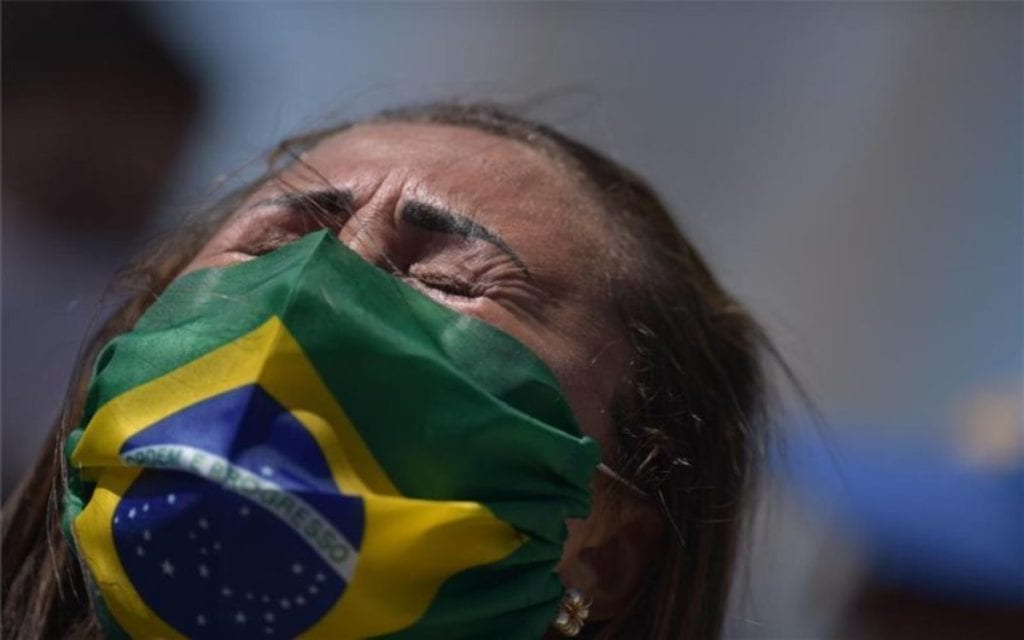After seven months of battling the COVID-19 virus, Latin America remains the region most affected by the pandemic. The figures speak for themselves: 33.8% of a million deaths and 27.7% of the world’s total of 33.27 million. Why are the governments of Latin American countries, after more than six months, continue to focus on containing the virus, instead of trying to finally fight it? What measures do the authorities intend to take in the near future?
The region with the highest social inequalities, health systems that were not prepared for such a sanitary crisis primarily continue to experience record hospital occupancy rates, in some cases reaching emergency levels in the past seven months. Additional components of the regional “explosive cocktail” of the pandemic also became local political difficulties and social conflict points that the dangerous virus exposed in a number of Latin American countries.

Brazil ranks the third place in the top ten countries most affected by the pandemic in the world.
Source: Red 92
In the last days of September (data as of September 29), 338,611 deaths and 9.2 million infections were recorded in Latin America. Five Latin American countries are among the world’s top 10 most affected countries: Brazil in the third place (4.7 million cases), Colombia in the fifth (818,203), Peru in the sixth (805,302), Mexico in the eighth (733 717) and Argentina in the ninth place (723,132). Among the states with the highest number of deaths as a result of infection with the COVID-19 virus, there are also two countries in Latin America – Brazil (the second place – 142,058 deaths) and Mexico (the fourth place – 76,430 deaths).
To these anti-ratings, it is worth adding other disappointing data: Chile is approaching the threshold of 500,000 cases of coronavirus infection, and Ecuador, Bolivia, the Dominican Republic and Panama in the past two months have crossed the mark of 100,000 cases in each country. However, over the past 7 days, the rate of infection has decreased by 5%.
It is necessary to take into account other figures that fully characterize the complexity of the problem in the region. One of these anti-records was the indicator of Peru, which has become the country with the highest mortality rate in the world (99.2 deaths per 100,000 inhabitants), with an average global rate of 13, the regional average is 53. In other Latin American countries, indicators are above average by region, for example, Bolivia (68.3 deaths per 100,000 inhabitants), Brazil (67.2), Chile (66.7), Ecuador (64.9), Mexico (59.9) and Panama (55), according to the latest data from the Inter-American Development Bank (Spanish – Banco Interamericano de Desarrollo, BID), based on research from the Johns Hopkins University in the United States.
In Peru, over 7 months (as of September 29), 32,324 people have died as a result of COVID-19 infection, although the average death rate per week has decreased by half compared to May and June, and last Monday was the lowest number of deaths (62). According to the Ministry of Health of this Latin American country, it was impossible to control the curve of the spread of infection for four months, and only four weeks ago, improvements were noticeable.
In Brazil, where the number of deaths worldwide was surpassed only by the United States (142,058 in Brazil, 205,031 in the United States), the death rate fell from 1,030 two months ago to 750 in the past 14 days. However, the Brazilian authorities fear that the country may soon face a second wave in states such as Amazonas and Rio de Janeiro, with an increase in the average number of deaths in the last 10 days in a row, due to the rapid lifting of restrictive measures in several regions.
Mexico has an average of 591 deaths per million inhabitants in a country of about 130 million people, which accounts for only 12 coronavirus tests per 1,000 inhabitants, one of the lowest rates in the world. In turn, last week the Argentine president extended “restrictive measures” to October 11 to contain the pandemic, focusing on various provinces where the virus is spreading at a faster rate than Buenos Aires. The metropolitan region, the most populous in the country, was the worst hit in the first months. In part, this decision by the Argentine government is due to the fact that intensive care beds are currently loaded at 61.4% of their capacity, both for seriously ill patients infected with coronavirus and with other diseases.

Uruguay is one of the countries with the lowest pandemic rates in the world.
Source: News Agency “El Litoral”
Despite the general regional panorama, things are not so bad in Latin America and the Caribbean, as examples such as Uruguay show, which recorded 2010 infections, of which 47 were deaths. Uruguay continues to be one of the countries with some of the lowest pandemic rates in the world, with 1 death for every 100,000 inhabitants.
Another positive example is Cuba, which appears to be “moving” towards control of the recent outbreak of the pandemic, as evidenced by 26 new infections last Monday (September 28), fewer than in previous days, for a total of 5483 infections and 122 deaths, with a case fatality rate of 2.22%. The Caribbean islands such as Dominica, Grenada, Saint Kitts and Nevis, Saint Lucia, and Saint Vincent and the Grenadines do not report deaths, then followed by countries such as Barbados, Haiti, Nicaragua and Venezuela (each with a 2 deaths per 100,000 inhabitants); Jamaica (3), Trinidad and Tobago (5) and Belize (6).
Today, after nearly seven months of strict quarantines in most Latin American countries, governments are gradually beginning to lift restrictive measures. Nevertheless, all these indulgences are often of a deterrent nature, because for decisive action the regional authorities often do not have the infrastructure, specialists, and specialized means in the field of health care. The acute economic and socio-political crisis triggered by the pandemic has affected all sectors of the region that were expected to be vulnerable to the effects of global turbulence. Now regional governments are turning to discussions on scenarios for the economic development of Latin America, energy trends, changing priorities of the public and political agenda and measures to combat the consequences of the pandemic.


